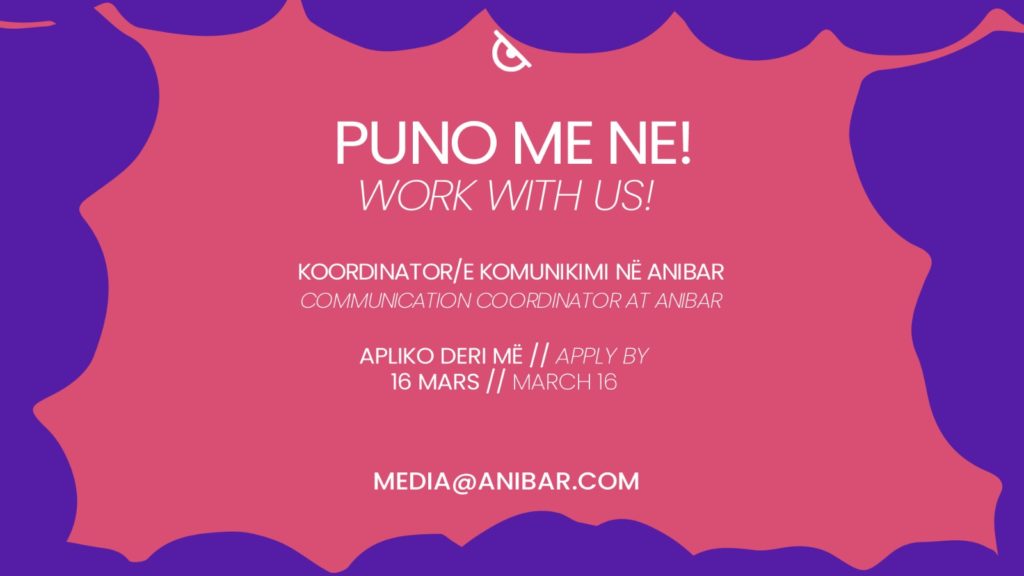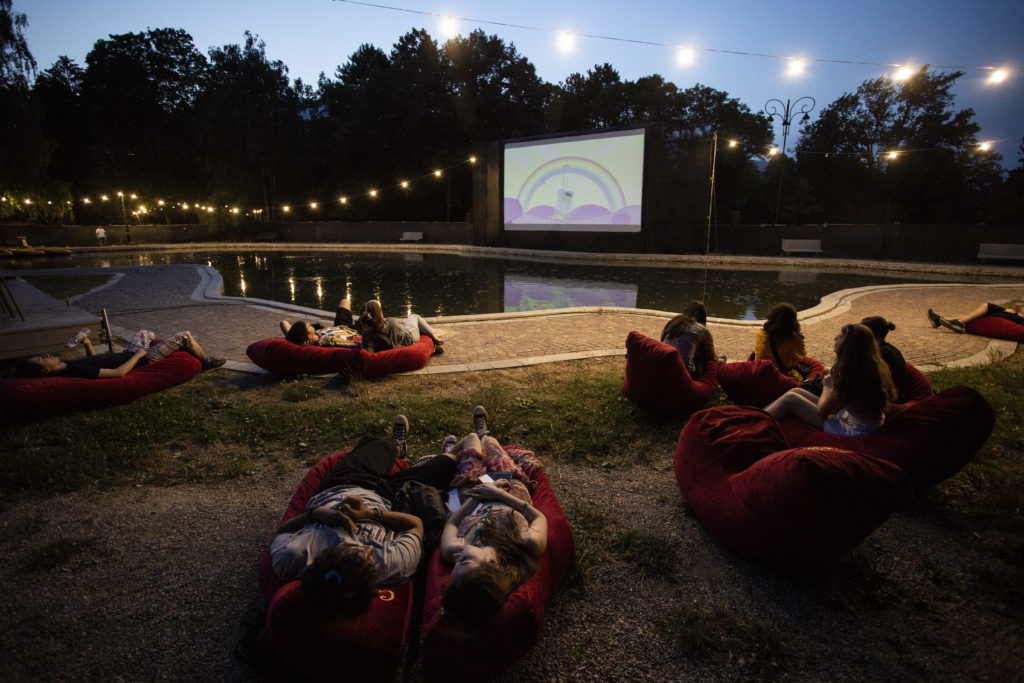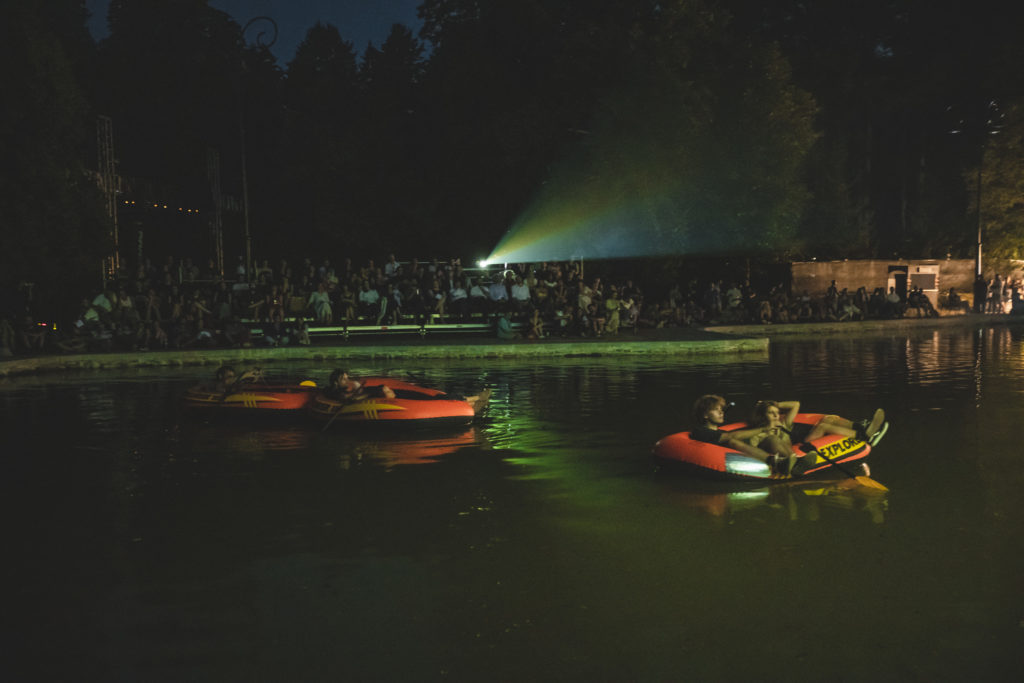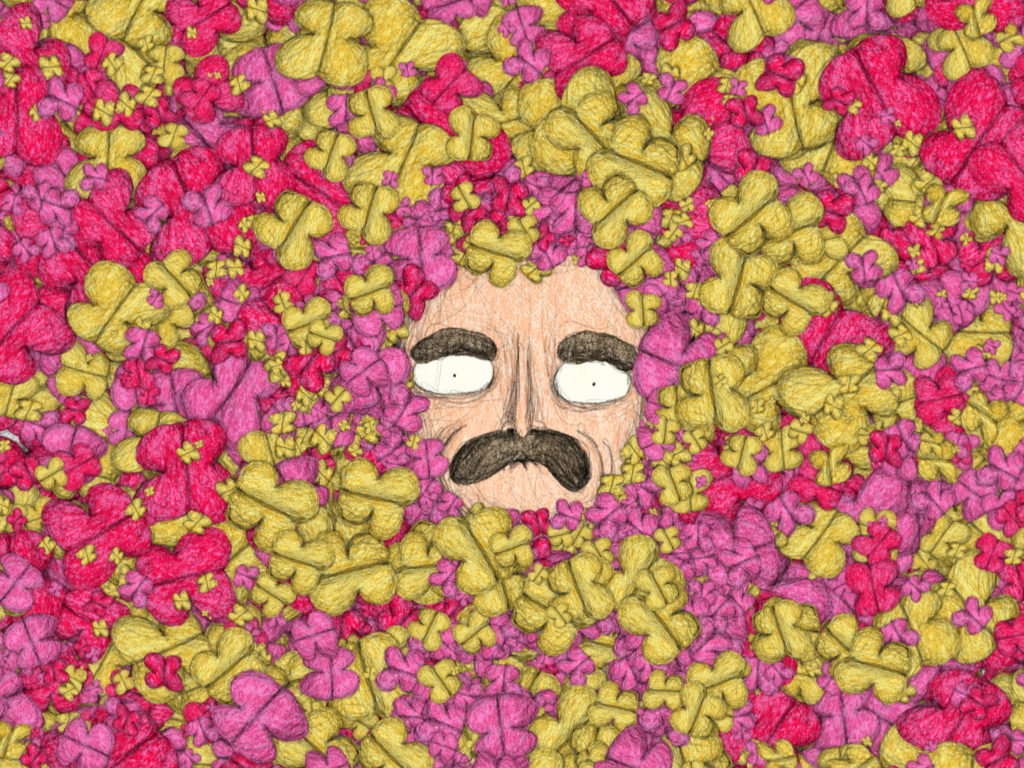Encountering Animation
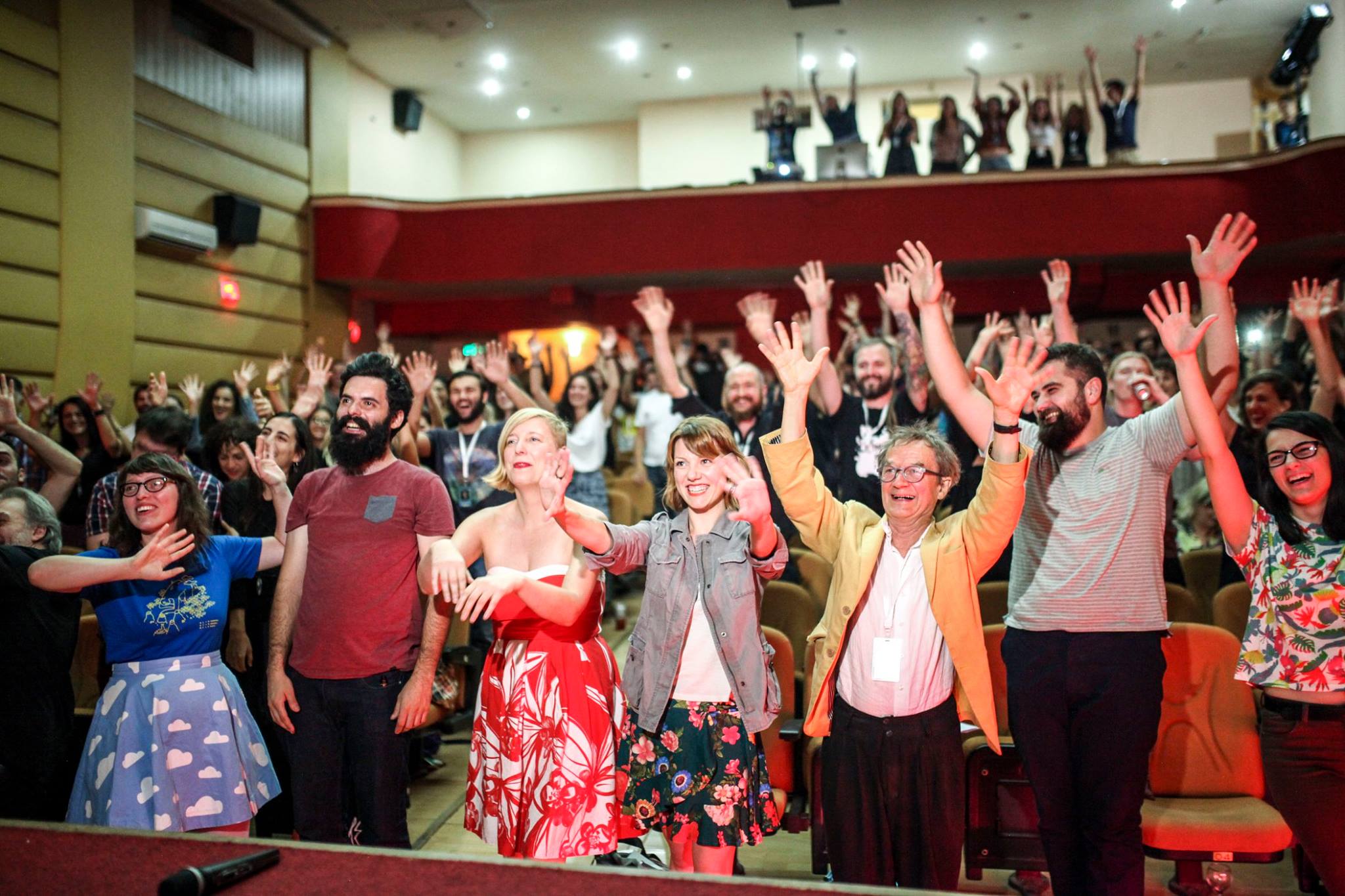
What we want to say is important, but often the way we say it is more telling
– Kristiana Petraj
Animation can be a way, for you, me, everybody. That is why many people coming from different spheres gathered in the town of Peja, attending the Anibar International Film Festival. Animation is approachable because of how involving it is, and how easy it is to get started. Characters are the people we see in ourselves, but does this make Animation such a powerful tool to tell a story, a mutual language and a common thing for all of us? I have been asking visual artists, volunteers and attendees of the festival to describe Animation and Anibar Festival in one word or one sentence – hoping that the answers will raise awareness and that people will start approaching the moving images differently.
Animated films are essential at Anibar, but there is something else that I would refer to as the backbone of the entire event. The volunteers. Every year during summer they work before, during and after the festival. Selma Lekovic states that animation is an “Escape from reality” and Anibar is a “ Second family“. The geniuses of animation are the animators, in its essence the festival is a fusion of ideas put into shapes and pictures. After all, technically animation can be defined by created shapes and movements hence commonly heard expression that animation is all about pictures and timing. But pictures always comes first, everything else comes afterwards. Kleidi Eski, an animator from Albania, defines animation as “Many paintings per second” and Anibar as a “Forever young festival”. Also many other animators have seen the festival as a great opportunity for the young people to learn, work together, feel safe, discover ways of expressing themselves, be fully engaged and excited. Coordinators of the festival are responsible for assisting with the planning, implementation and supervision of the events, workshops and masterclasses that take place in Jusuf Gërvalla Cinema and other cultural spaces in Peja. Ardora Bilibani, one of the coordinators, sees animation as “The best form of visual explanation” and Anibar as “The only hope for Peja”. As long as Anibar is the only event of such kind in Peja, it remains a substantial hope for this city. But the young people of this city also the hope that in the future their engagement in social cultural activism will give Peja a richer identity.
Visual artists are just people who decide to take their art to the next level. Joan Kamberaj, a new influencer and visual artist from Albania invited to the festival refers to animation as “One step at a time” and Anibar as “International importance in a small city”. Indeed! The festival is an ideal example showing how one can transform reality and run an animation festival in a place with no facilities and infrastructure. This statement manifests how small towns matter as potential cradles of new powerful organizations who take one step at a time reaching for local community’s participation. Festival journalism workshop member, Enxhi Noni, who has an experience in youth jury at various festivals, states that animation is “One point perspective” and Anibar is a “Place to be”. She recalls that for her as a juror it was very hard to choose only one animated film from hundreds she watched. In her experience, animated films have unique visions and strong storytelling, but they differ greatly and remain independent from each other. Eventually, the great lecturer and animation director of several films, among them Hate for Sale and Voting in the EU, Anna Eijsbouts defined animation as “A language”. A common language, spoken differently around the world.
This article is an output of the Film Criticism and Journalism workshop which is being organized within the project “Development of animation culture between Western Balkans and Visegrad Group” implemented by Anibar and Civil Association for the Support of the Animated Film, Primanima Ltd.,Institute of Cultural Studies, Faculty of Humanities, Marie Curie-Skłodowska University in Lublin, The Academy of Performing Arts in Prague – Film and TV School – Department of Animated Film.
The project is co-financed by the Governments of Czechia, Hungary, Poland, and Slovakia through Visegrad Grants from International Visegrad Fund. The mission of the fund is to advance ideas for sustainable regional cooperation in Central Europe.

